Meet the 2019 Hollings and EPP/MSI Scholars!
By Kathy Broughton and Elizabeth Weinberg
August 2019
Each year, NOAA's Office of National Marine Sanctuaries hosts several undergraduate Hollings and Educational Partnership Program with Minority Serving Institutions (EPP/MSI) scholars at sites across the National Marine Sanctuary System. Working with sanctuary staff, these students gain practical training experience through NOAA-related science, research, technology, policy, management, and education activities.
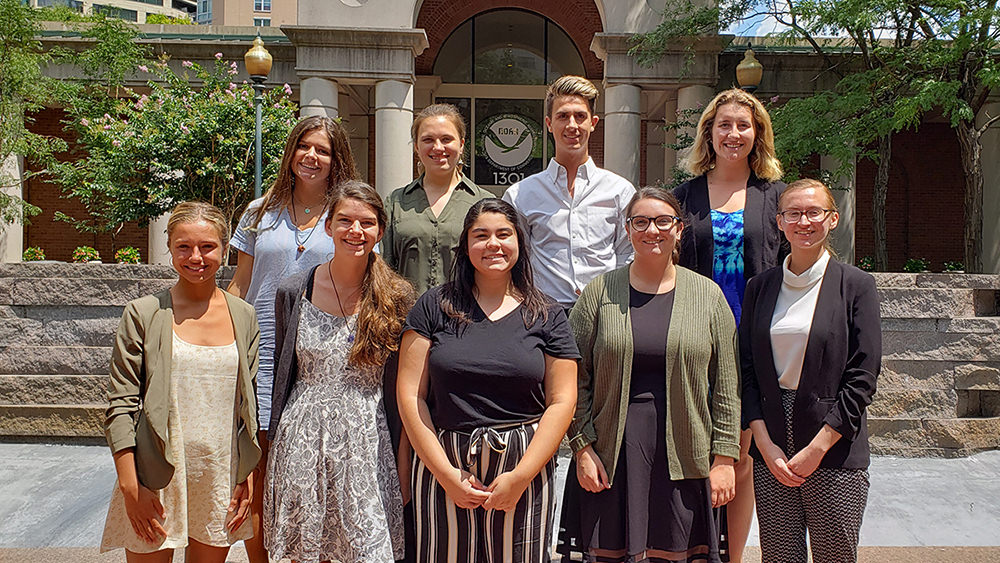
These two scholarship programs are designed to prepare students for careers as environmental scientists and educators, and to increase public environmental and ocean literacy. The Educational Partnership Program with Minority-Serving Institutions Scholarship supports the training and graduation of STEM students from traditionally underrepresented minority communities. The Ernest F. Hollings Scholarship provides academic assistance and paid internships to undergraduates in NOAA-related science, policy, and education fields. With such crucial goals, it's no wonder that the scholarships attract some stellar students – and we're excited to introduce you to this year's cohort whose projects were with the Office of National Marine Sanctuaries!
Interested in these scholarships? Learn more about the Hollings Scholarship and the EPP/MSI Scholarship.
Hannah Brady – Hollings Scholar
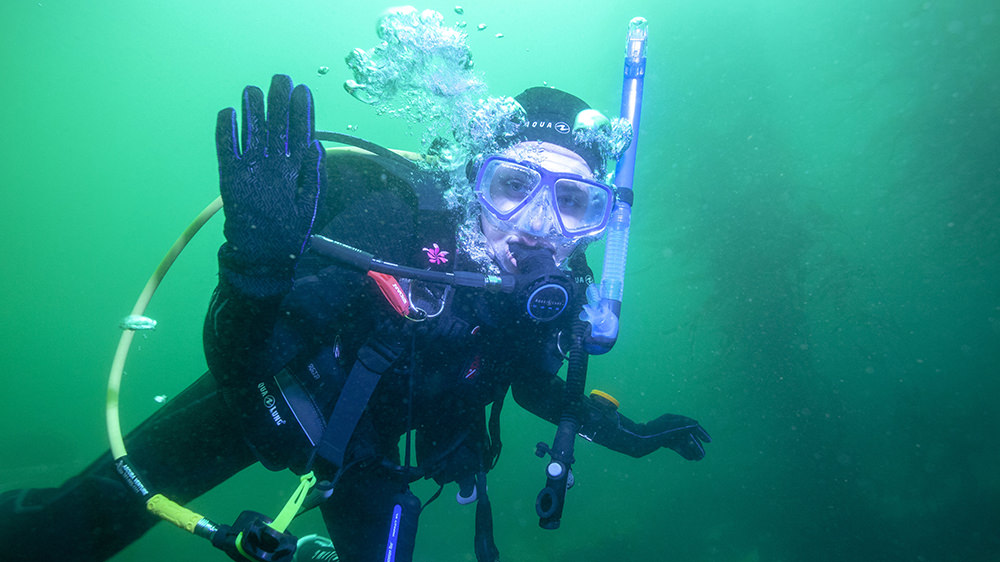
Hannah Brady is a senior at Texas A&M University – Corpus Christi majoring in biology with a concentration in marine biology. For her internship, Brady used 360° underwater photos to form virtual reality images. Underwater 360° imagery helps the public see the world many people never get to experience. The 360° underwater images are taken by a scuba diver using a fisheye camera, which Brady then stitched together using computer software to form a panoramic view. As a scientific diver, Hannah also took 360° images along the Monterey Bay Aquarium intake pipe that will be used for comparative purposes to demonstrate the effect of the future intake pipe restoration on Monterey Bay National Marine Sanctuary. Brady plans to use the knowledge she has gained along with her increased scuba diving experience to pursue her passion for the ocean and marine field research.
Rosemary Burkhalter-Castro – Hollings Scholar
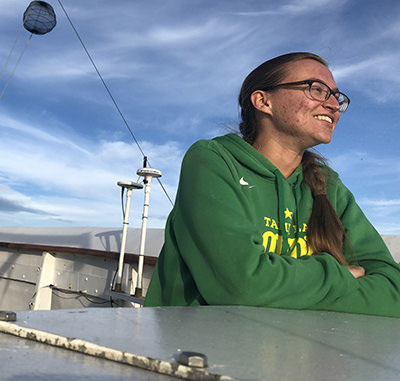
Rosemary Burkhalter-Castro is a senior at Eckerd College in St. Petersburg, Florida, studying marine science with a concentration in geophysics and a minor in biology. She spent her summer internship in Silver Spring, Maryland, at NOAA headquarters under the guidance of LT Damian Manda of the Hydrographics Systems and Technology Branch. Burkhalter-Castro processed raw sonar data that was collected in Olympic Coast National Marine Sanctuary in 2018 into working data files that can be used for mapping. Burkhalter-Castro is interested in geological and biological processes that shaped the Juan de Fuca Canyon, and was able to process all 77 square miles of side scan sonar data collected inside the canyon. Thanks to this project, the sanctuary will continue its work on creating detailed benthic habitat maps. After she graduates, Burkhalter-Castro hopes to join the ocean mapping workforce before continuing her education in planetary science and marine geophysics.
Carina Burroughs – Hollings Scholar
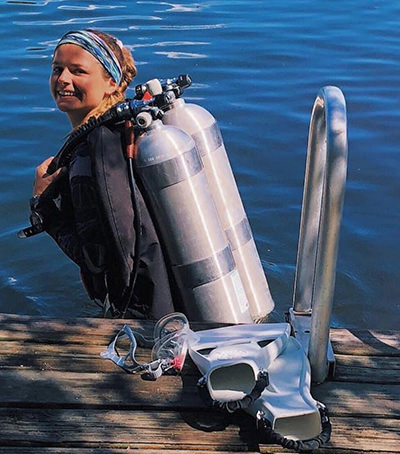
Carina Burroughs is a senior at the University of Miami, where she studies marine affairs and ecosystem science and policy. She is passionate about the exploration of marine and terrestrial ecosystems and connecting scientific discoveries to the greater public. This summer, Burroughs worked as a Hollings intern for Papahānaumokuākea Marine National Monument in Hawai’i, focusing on sharing the science and stories of the monument with the world. With the guidance of her mentor, Andy Collins, and the entire staff of Mokupāpapa Discovery Center in Hilo, she developed written and multimedia content distilling scientific information, illuminating threats to the monument ecosystems, and highlighting other important knowledge. She also developed new curriculum for the education team and worked with visitors and school groups. Her work this summer supported and expanded upon efforts to share the monument and foster public connection to Papahānaumokuākea. In addition to engaging the public in marine conservation, Burroughs is passionate about fieldwork and scientific diving. She is particularly interested in connecting people outside of the scientific community to the field and using experiential learning and citizen science to inspire conservation for our remaining wild spaces. Her belief in the importance of connecting exploration and scientific knowledge to the public drives her research in the upcoming year, which will focus on assessing impacts and outcomes of citizen science.
Emily Clancey – Hollings Scholar
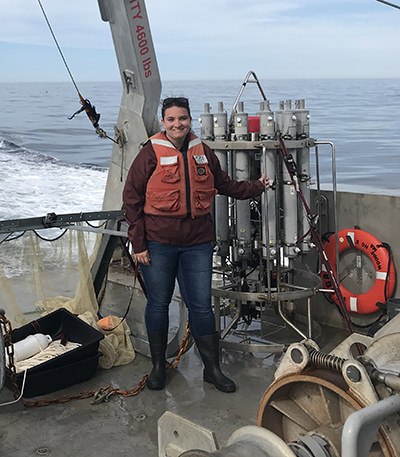
Emily Clancey is a marine biology and environmental science double major at the University of North Carolina Wilmington. This summer, Clancey interned at the Woods Hole Oceanographic Institution studying sand lance, an important forage fish within Stellwagen Bank National Marine Sanctuary. In Stellwagen Bank, sand lance play a role as a highly nutritious prey item for whales and fish. Mentored by Dr. Joel Llopiz (Woods Hole) and Dr. David Wiley (Stellwagen Bank), Clancey looked at how reproductive-age sand lance vary in size each year. Her research will help sanctuary managers understand how sand lance population dynamics fluctuate and might affect the larger ecosystem in Stellwagen Bank. Clancey also participated in expeditions within the sanctuary to collect sand lance as part of an ongoing sanctuary project.
Mark Haver – Hollings Scholar
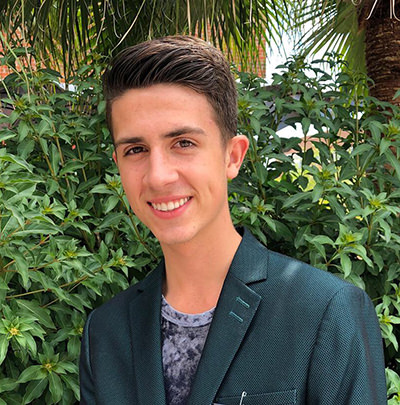
Mark Haver is a senior at Florida Southern College, where he is majoring in environmental studies, marine biology, political science, and political communication. This summer, Haver worked with Papahānaumokuākea Marine National Monument under the mentorship of Naomi McIntosh, Sarah Marquis, and Athline Clark. He identified key messages for the upcoming 20th anniversary of the Northwestern Hawaiian Islands Coral Reef Ecosystem Reserve (included within monument territory) and the 10th anniversary of the monument’s inscription as a UNESCO Mixed World Heritage Site. Haver focused on communicating the stories and successes of the past 20 years of outreach, culture, and research, and highlighting Papahānaumokuākea’s special connection to Native Hawaiian culture. Haver is currently drafting a Sanctuaries Conservation Series paper on evaluating translocation as a potential conservation tool for wildlife most vulnerable to sea level rise in the Northwestern Hawaiian Islands, which could inform sanctuaries on sea level rise management across the country.
Melia Matthews – Hollings Scholar
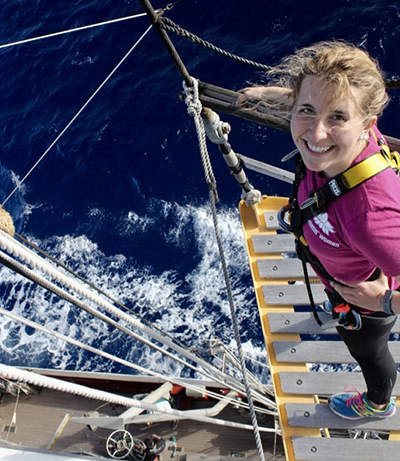
Melia Matthews is a senior at Whitman College majoring in biology and minoring in classics. She spent the summer working in the West Coast Regional Office of National Marine Sanctuaries in Monterey, California. There, she continued work on designing and populating a species inventory for Monterey Bay National Marine Sanctuary. One of the fundamental purposes of the National Marine Sanctuary System is to maintain biological diversity within its waters, but currently no large marine protected area has a public inventory of the species that live within its boundaries. Working with mentors Bill Douros and Dr. Steve Lonhart, Matthews compiled 2,500 species across 26 phyla. Plans are in the works for this project to be taken up by other national marine sanctuaries along the West Coast and eventually throughout the sanctuary system. While at the West Coast Regional Office, Matthews also dove in cold water for the first time, became a certified NOAA diver, and developed her underwater photography skills. This internship helped Matthews understand the possibilities of working in a marine biology field and helped her narrow down her choices for grad school. She is looking forward to continuing her education on the ocean and becoming a scientific diver.
Jezella Peraza – EPP/MSI Scholar
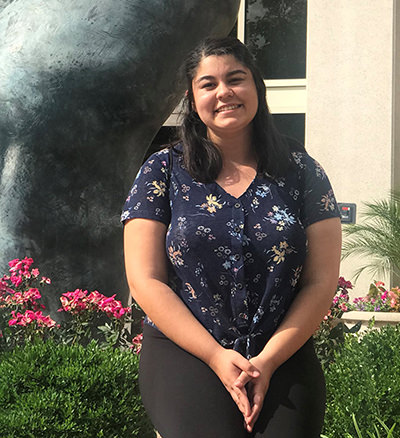
Jezella Peraza is a junior at California State University, Monterey Bay, majoring in marine science. As an EPP/MSI scholar, she interned at the Office of National Marine Sanctuaries headquarters in Silver Spring, Maryland. Mentored by Tracy Hajduk, Dayna Rignanese, and Hannah MacDonald, Peraza compiled education materials for Sanctuaries Live expedition webpages. She created a database of education materials from each national marine sanctuary, which will be matched with Sanctuaries Live expeditions to support education and curriculum. Peraza looks forward to getting involved with Monterey Bay National Marine Sanctuary when she returns back to school to continue her marine science education.
Mia Silverberg – Hollings Scholar
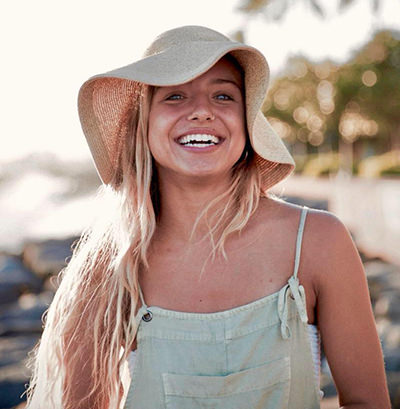
Mia Silverberg is a rising senior at the University of California Berkeley majoring in molecular environmental biology and global change biology. Called to action by the rising effects of climate change on our ocean and small island communities, Silverberg is pursuing a career in coral reef conservation and climate change mitigation. This summer she conducted research on the reefs of Lehua and Ni‘ihau, Hawai‘i, identifying the capacity of geographic information systems (GIS) to revolutionize coral reef monitoring. By analyzing photographs of reef plots using GIS and comparing her data with visual survey observations, Mia found that GIS provides a more efficient and accurate method of coral surveying than traditional methods. Moving forward, Mia intends to pursue a graduate degree in environmental policy and marine biology, and to continue to work towards strengthening the marine environments of small island communities.
Clara Smith – Hollings Scholar
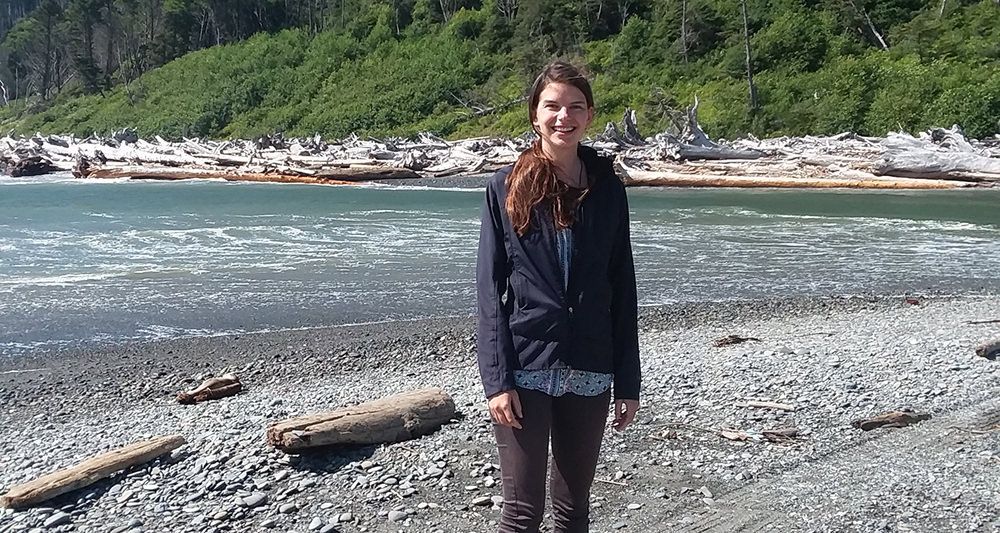
Clara Smith is pursuing a degree in marine science and a certificate in data science from the University of Hawai`i at Hilo. She spent her summer as a Hollings Scholar working for Olympic Coast National Marine Sanctuary in Washington state. Her project focused on investigating the distribution of marine debris in the sanctuary and surrounding area. Working under mentors Chris Butler-Minor, Jacqueline Laverdure, and Nicole Harris, Clara analyzed the debris data that have been collected over the past seven years by citizen scientists. The debris monitoring project was initiated after Japanese debris started washing up in the sanctuary following the 2011 tsunami. Smith’s data analysis is helping the sanctuary create outreach materials about marine debris, including an interactive map of debris distribution on the Olympic Coast and a marine debris infographic. These outreach materials will be made available to the public and used by the sanctuary education team to inspire action in preventing and responding to marine debris on the Washington coast.
Kathy Broughton is a marine ecologist for NOAA’s Office of National Marine Sanctuaries. Elizabeth Weinberg is the digital outreach coordinator/writer for NOAA's Office of National Marine Sanctuaries.

